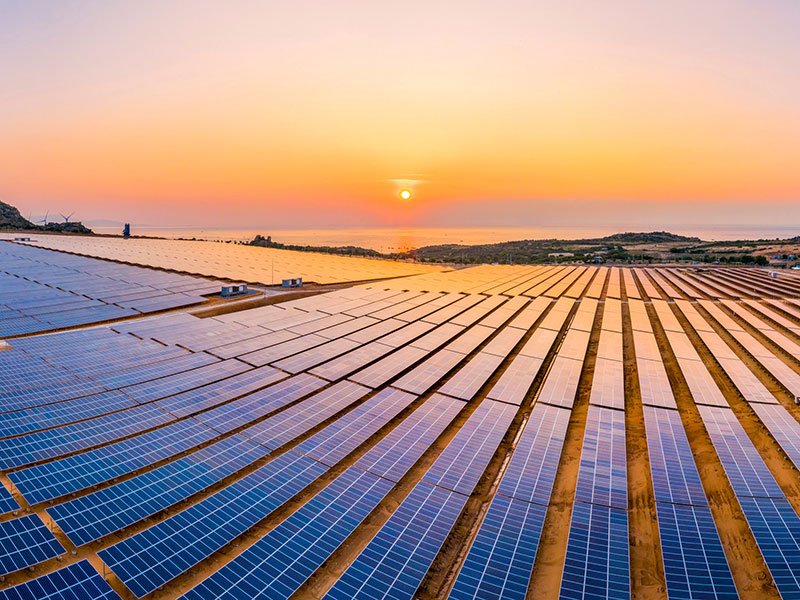“A problem well defined is a problem half-solved” is a wise quip attributed to Charles Kettering, the head of research at General Motors nearly a century ago. “Magical thinking” is another term coined earlier by British anthropologist, Sir James George Frazer in the context of his exploration of primitive beliefs and rituals in various cultures.
As a turbulent year domestically and globally draws to a close, bringing with it a spate of government program and funding activity to reverse Australia’s 70-year industrial decline, it is worth asking which approach has guided the nation’s leaders and policymakers.
Is Australia’s innovation and industry policy ambition – from renewable energy and net zero targets to advanced manufacturing and defence industry rejuvenation – driven more by a savvy sense of industry structure and realpolitech or magical thinking?
“There is a lot of pent-up angst in the innovation system now, with low or no tolerance for anything other than dealing with the root cause issues when the stakes are so high,” says Adrian Turner, co-founder of biosecurity startup, ExoFlare. Turner was formerly head of CSIRO’s Data61 and Minderoo’s Fire and Flood Resilience initiative and has a broad and deep perspective across the domestic and global innovation system.

Those high stakes are about Australia’s economic prosperity and security in a world gripped by technological, socio-economic, and geopolitical upheaval not experienced in nearly 100 years.
Navigating successfully through these turbulent twenties, Turner says, requires a clear-eyed view of Australia’s industry structure, technological capability, and real comparative advantage.
Consider a few known indicators of where Australia sits amid the upheaval, illuminated (again) in last week’s Industry Innovation and Science Australia (IISA) review, Barriers to Collaboration and Commercialisation.
It is well established that innovative and resilient modern economies have:
- A diverse industrial base which infuses skills and collaboration across sectors, drives high-value exports and allows businesses to grow and compete globally. Australia ranks 93rd out of 133 countries in the Harvard Complexity Index, dropping 12 places in a decade. Australia’s economic complexity and export profile is comparable to that of developing countries. Only 1 to 2 per cent of Australian businesses innovate in ways that are new to the world
- A vibrant middle-industrial market. It’s a critical market for economic diversification and absorptive capacity as these businesses are more likely to innovate, operate in international markets and seek collaboration with smaller and larger companies to compete to win customers and grow. Australia’s middle market has been shrinking since the 1960’s, with medium-sized enterprises employing 20-199 people down to 6 per cent of the nation’s one million businesses and well below OECD comparisons
- An efficient and high impact R&D and commercialisation system: Australia’s university-driven approach is non-commercial and underperforming, if not broken. The incentives and speed at which industry and research entities operate is misaligned and there is a fundamental mismatch between the research/academic mindset and delivering outcomes for business partners
- Management savvy to pursue and steward higher-risk, new to the world technologies and projects developed through operating in dynamic and highly competitive markets. In recent decades, domestic industry conditions and culture have led to an atrophy in this critical tier. It takes decades to recultivate it at sufficient scale
The above inconvenient truths have massive implications for a nation’s capacity and capability to adopt and scale innovation and goes a long way to explain why Australia’s labour productivity growth is the slowest in 60 years.
Quite obviously then, any industry policy and assistance program which ignores the structural and skill realities is doomed to fail. And it’s why the IISA review sought to redefine the problem the government needs to solve.
“The current orientation of innovation and industry policy assumes businesses of all types and sizes have the capacity and management capability to navigate risk and innovate, if only the money was there to help them go after it,” says Andrew Stevens, board chair of Industry Innovation and Science Australia, a government-appointed group that provides advice to Industry minister Ed Husic.
“The reality is that the vast majority of Australian businesses don’t have the capacity to innovate through R&D and commercialisation and they do not demonstrate any interest, need or risk tolerance to do so.”
Stevens points out that there is $31 billion ready to be invested now, including $14 billion immediately accessible by Australia’s venture capitalists; $15 billion in the NRF; and $2 billion in the Critical Minerals Fund.
“The belief is that there is a big pool of worthy recipients waiting with open arms and open mouths to just go after it. It’s not the case.”
IISA’s “Barriers” review was presented to the Industry minister last week. It coincided with the official start of the government’s $392 billion Industry Growth Program, which offers between $50,000 and $5 million in matching grants, and prompted Mr Husic to declare “lifestyle businesses are holding the Australian economy back.”
That may be true too, but it misses the more critical point of government assistance needing to be targeted toward businesses that can do the most high-impact work with it.
That won’t happen unless a lot changes. It must start with government recalibrating from designing incentive programs which prioritise broad-based vote-catching to those which target a much smaller subset of medium-sized technology-ready and management-ready go getters.
A global example of this is Germany’s Mittelstand model and its Fraunhofer research institute. The Mittelstand (medium-sized businesses) is the backbone of Germany’s economy, accounting for almost 60 per cent of the country’s employment and 34 per cent of national revenues. It displays a significantly higher diversity of businesses compared with similar-sized businesses in Australia.
The approach of the Mittelstand model is to encourage large numbers of diverse and technological sophisticated SMEs that can produce high-quality goods in niche areas, thereby maintaining their manufacturing capabilities and capturing a strong market share in those specialised areas.
IISA’s Stevens also recommends a re-writing of the Australian grants’ application and assessment criteria to more directly home-in on businesses that have the best chance to help close the capability and capacity shortfalls across Australia’s industrial base in the immediate to medium term.
Also necessary is a de-coupling of the requirement for industry to engage with publicly funded research organisations to be eligible for government innovation and support programs.
Whether any of this critical re-orientation will happen in 2024 is unclear.
Federal Treasurer Jim Chalmers is clearly prioritising meeting 2030 net zero renewable energy targets with the National Reconstruction Fund. The NRF funding is mostly out of reach for the bulk of Australia’s SME innovator class.
It is also fair, if politically dangerous, to ask whether the Australian government’s net zero-driven reindustrialisation and green energy superpower ambition is based more on magical thinking than technological and economic realism.
Technological transformations are seen as positive supply shocks, where a new tech comes along, and new private and public investment gravitates toward it. By contrast, the green transition is driven by public policy with an accompanying need to finance investments whose profitability cannot be taken for granted.
A couple of damning cost benefit analyses of net zero (thru 2030 and beyond) arrived just as COP28 got underway in Dubai last week.
Published in a special issue of Climate Change Economics, they show the economics of getting to net zero are dismal and the benefits, marginal. Crudely summarised, the two analyses support the conclusion that net zero by 2050 goal can be reached. But the sacrifice that the world must make to achieve this plan is steep. The people living between 2030 and 2060 could lose as much as 15 per cent of their consumption. The world after 2060 could be 10 per cent poorer.
This must be very worrying for the Treasurer, who has bet Australia’s future on net zero as the way to new industry nirvana. This kind of cost-benefit scrutiny of net zero mandates is only going to increase next year.
It begs a few important questions for Australia and all the signatories to the Paris net zero goals: what if there is no way to make net zero economically viable?
Here’s another question: Ten years from now, will solar and renewables be the foundational energy tech of a new age of innovation for Australia and the world. Or will they be indicative of the magical thinking in a virtue economy that gripped leaders and policymakers a decade before?
Strap-in! All this and more is certain to energise debate in 2024. Whether it will be rational is another question entirely. But let’s hope the magical thinking is reserved for the kids at Xmas and stops there.
Do you know more? Contact James Riley via Email.

